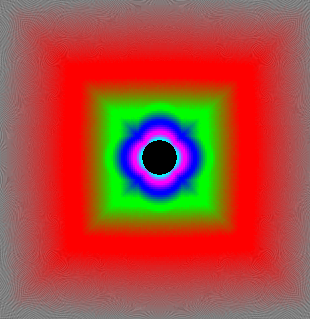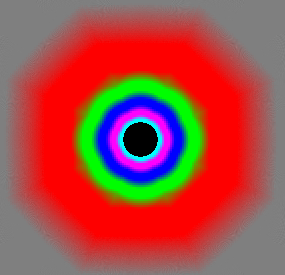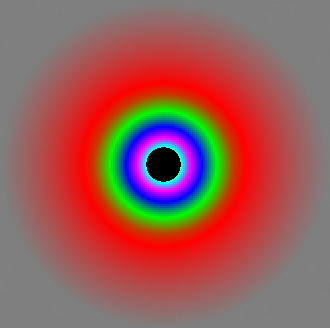AMD's Radeon HD 5870: Bringing About the Next Generation Of GPUs
by Ryan Smith on September 23, 2009 9:00 AM EST- Posted in
- GPUs
Angle-Independent Anisotropic Filtering At Last
For a number of years now the quality of anisotropic filtering has been slowly improving. Early implementations from AMD and NVIDIA were highly angle-dependent, resulting in a limited improvement to image quality from such filtering. The angle-dependent nature lead to shimmering and other artifacting that was not ideal.
As of the previous generation of cards, the quality of anisotropic filtering had become pretty good. NVIDIA’s best filtering mode was pretty close to angle-independent, and AMD’s only slightly worse. Neither was perfect, but neither was bad either.

The Radeon HD 4890

The GeForce GTX 285
However so long as no one had an angle-independent implementation, there was room to improve. And AMD has gone there. The anisotropic filtering algorithm used by the 5000 series is now truly and completely angle-independent. There are no more filtering tricks being used.

The Radeon HD 5870: Perfection
As you can see, the MIP maps in our venerable D3D AF Tester are perfectly circular, the hallmark of an angle-independent implementation. With angle-independent filtering, this effectively marks the end of the filtering arms race. AMD has won, and should NVIDIA catch up in the future the two would merely be tied. There’s nowhere left to go for quality beyond angle-independent filtering at the moment.
AMD tells us that there is no performance hit with their new algorithm compared to their old one. This is a bit hard to test since we can’t enable the old algorithm on the 5870, but certainly whatever performance hit there is, is similarly minor. In all of the testing we’re doing today, you will see results done with 16x anisotropic filtering used.
What you won’t see however is a difference, particularly with our static screenshots. When discussing the matter, AMD noted that the difference in perceived quality between the old algorithm and the new one was practically the same. After looking at matters we find ourselves in agreement with AMD; we were not able to come up with any situations where there was a noticeable difference, beyond the obvious AF quality tests that are designed to identify such changes.
Regardless of the outcome, AMD deserves kudos for making angle-independent anisotropic filtering happen. It’s demonstrably perfect filtering with no speed hit versus the previous generation of filtering; making it in essence a “free” improvement in image quality, however slight the real-world results are. We’re always ready to get better image quality out of our video cards, after all.










327 Comments
View All Comments
Xajel - Wednesday, September 23, 2009 - link
Ryan,I've send a detailed solution for this problem to you ( Aero disabled when running and video with UVD accerelation ), but the basic for all readers here is just install HydraVision & Avivo Video Convertor packages, and this should fix the problem...
Ryan Smith - Wednesday, September 23, 2009 - link
Just so we're clear, Basic mode is only being triggered when HDCP is being used to protect the content. It is not being triggered by just using the UVD with regular/unprotected content.biigfoot - Wednesday, September 23, 2009 - link
Well, I've been looking forward to reading your review of this new card for a little while now, especially since the realistic sounding specs leaked out a week or so ago. My first honest impression is that it looks like it'll be a little bit longer till the drivers mature and the game developers figure out some creative ways to bring the processor up to its full potential, but in the mean time, it looks like I'd have to agree with everyone's conclusion that even 150+GB/s isn't enough memory bandwidth for the beast, I'm sure it was a calculated compromise while the design was still on the drawing board. Unfortunately, increasing the bus isn't as easy as stapling on a couple more memory controllers, they probably would've had to resort back to a wider ring bus and they've already been down that road. (R600 anyone) Already knowing how much more die area and power would've been required to execute such a design probably made the decision rather easy to stick with the tested 4 channel GDDR5 setup that worked so well for the RV770 and RV790. As for how much a 6 or 8 channel (384/512 bit) memory controller setup would've improved performance, we'll probably never know; as awesome as it would be, I don't foresee BoFox's idea of ATI pulling a fast one on nVidia and the rest of us by releasing a 512-bit derivative in short order, but crazier things have happened.biigfoot - Wednesday, September 23, 2009 - link
Oh, I also noticed, they must of known that the new memory controller topology wasn't going to cut it all the time judging from all the cache augmentations performed. But like i said, given time, I'm sure they'll optimize the drivers to take advantage of all the new functionality, I'm betting that 90% of the low level functions are still handled identically as they were in the last generations architecture and it will take a while till all the hardware optimizations like the cache upgrades are fully realized.piroroadkill - Wednesday, September 23, 2009 - link
The single most disappointing thing about this card is the noise and heat.Sapphire have been coming out with some great coolers recently, in their VAPOR-X line. Why doesn't ATI stop using the same dustbuster cooler in a new shiny cover, and create a much, much quieter cooler, so the rest of us don't have to wait for a million OEM variations until there's one with a good cooler (or fuck about and swap the cooler ourselves, but unless you have one that covers the GPU AND the RAM chips, forget it. Those pathetic little sticky pad RAM sinks suck total donkey balls.)
Kaleid - Wednesday, September 23, 2009 - link
Already showing up...http://www.techpowerup.com/104447/Sapphire_HD_5870...">http://www.techpowerup.com/104447/Sapphire_HD_5870...
It will be possible to cool the card quietly...
Dante80 - Wednesday, September 23, 2009 - link
the answer you are looking for is simple. Another, more elaborate cooler would raise prices more, and vendors don't like that. Remember what happened to the more expensive stock cooler for the 4770? ...;)Cookie Monster - Wednesday, September 23, 2009 - link
When running dual/multi monitors with past generation cards, the cards would always run at full 3d clocks or else face instabilities, screen corruptions etc. So even if the cards are at idle, it would never ramp down to the 2d clocks to save power, rending impressive low idle power consumption numbers useless (especially on the GTX200 series cards).Now with RV870 has this problem been fixed?
Ryan Smith - Wednesday, September 23, 2009 - link
That's a good question, and something we didn't test. Unfortunately we're at IDF right now, so it's not something we can test at this moment, either.Cookie Monster - Wednesday, September 23, 2009 - link
It would be awesome if you guys do get some free time to test it out. Would be really appreciated! :)